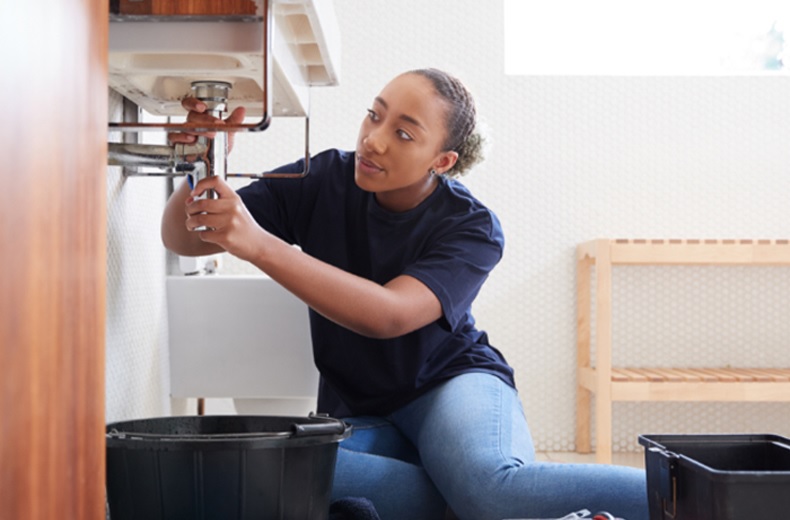Top Quality Water Heater Installation Alabaster AL for Optimal Comfort
Top Quality Water Heater Installation Alabaster AL for Optimal Comfort
Blog Article
A Step-by-Step Overview to Reliable Water Heating Unit Installment for Optimal Efficiency
Embarking on the job of mounting a water heating system is a venture that requires precision and a systematic technique for accomplishing optimum efficiency. As you continue, the details of connecting water supply lines and setting up trusted electrical or gas links await, encouraging understandings right into making certain performance and reliability.
Picking the Right Hot Water Heater

Next, take into consideration the size and capability of the water heater. It's crucial to analyze your family's warm water demands, which can differ based on the number of occupants and their usage patterns. A device that's too small might result in not enough warm water, while an oversized design might result in unnecessary power consumption.
Efficiency scores additionally play an essential role in option. Seek water heating units with high Energy Element (EF) scores, showing remarkable efficiency and reduced energy usage. Tankless designs, though usually more costly upfront, deal significant power financial savings with time as a result of their on-demand home heating abilities.
Preparing the Installation Area
Before mounting a brand-new water heating unit, thorough prep work of the installation location is essential. It's crucial to gauge the area thoroughly to fit the water heater's dimensions, making certain ample clearance around the system for efficient procedure and servicing.
Inspect the flooring for security, as the water heating system will need a strong, degree surface area to operate successfully. If required, set up a drip frying pan beneath the unit to capture potential leakages or spills, stopping water damages to the surrounding area.
Additionally, make certain that all required tools and materials are on hand before beginning the setup. This includes things such as wrenches, screwdrivers, a degree, and any additional hardware required for protecting the heating system and placing. A well-prepared installment location sets the foundation for an effective hot water heater arrangement, enhancing efficiency and security.
Connecting Water Supply Lines
When connecting water supply lines to your freshly installed water heating unit, it is essential to guarantee that all connections are leak-free and protected to maintain reliable procedure and protect against water damages. Begin by recognizing the cold and warm water lines. The cold water inlet is commonly noted with a blue tag or a "C", while the hot water outlet is marked with a red tag or an "H".
Usage versatile water heating system connectors to help with a simpler setup process. Before attaching the adapters, position a plumber's tape around the threaded ends of the water heating system's inlet and electrical outlet pipes.
Once links are in location, gradually activate the primary supply of water shutoff. Examine each connection for leakages by visually really feeling and examining for dampness. Tighten links as needed, and guarantee the pressure safety valve is properly set up, guarding versus extreme stress build-up.
Establishing Electric or Gas Connections
Effectively establishing the electrical or gas connections for your hot water heater is a critical action to guarantee effective and risk-free procedure. For electrical hot water heater, begin by verifying you could try this out that the electric circuit is suitable with the heating unit's voltage and amperage requirements. Make certain the power supply is switched off at the breaker to stop mishaps. Attach the electric wires to the heating unit adhering to the supplier's wiring representation. Usually, this entails connecting the ground cord to the environment-friendly terminal, and the staying wires to their matching terminals, safeguarding each with cable nuts.
For gas hot water heater, safety is vital. Confirm that the gas supply is off prior to continuing. Link the gas line to the water heating system using a flexible gas connector, guaranteeing it is correctly threaded and secured with pipe joint substance or review Teflon tape appropriate for gas links. Tighten the connections with a wrench, making sure not to over-tighten (Water Heater installation Alabaster AL).
As soon as connections are made, evaluate for any possible leaks. For gas lines, apply a soapy water solution to the joints; bubbles suggest a leakage. For electric links, double-check that all circuitry is secure and appropriately shielded, maintaining conformity with local electric codes.
Examining and Readjusting for Effectiveness
With the electric and gas links securely in location, the next action is examining the operational efficiency of your water heating unit. Begin by meticulously turning on the water supply and ensuring there are no leakages at any of the joints or shutoffs.
Following, carry out a complete evaluation to make certain the heating elements or burner are working properly. For electric heating units, use a multimeter to confirm if the aspects are drawing the appropriate existing. In gas designs, observe the heater fire; it should be steady and blue, indicating effective combustion.
Adjust the setups as necessary to eliminate inadequacies. Take into consideration implementing insulation steps, such as including a hot water heater covering, to even more enhance performance by minimizing warmth loss. Furthermore, examine the anode pole's problem, linked here as a tatty rod can decrease efficiency and bring about container corrosion.
Conclusion
Efficient water heating system setup is vital for guaranteeing optimal performance and energy savings. Safely connecting water supply lines and carefully establishing up electrical or gas connections reduce potential issues.

Appropriately setting up the electric or gas connections for your water heating system is a vital action to guarantee effective and safe procedure. For electrical water heating units, start by confirming that the electrical circuit is compatible with the heater's voltage and amperage demands. Connect the gas line to the water heater making use of an adaptable gas adapter, guaranteeing it is appropriately threaded and sealed with pipeline joint compound or Teflon tape suitable for gas links.
Report this page